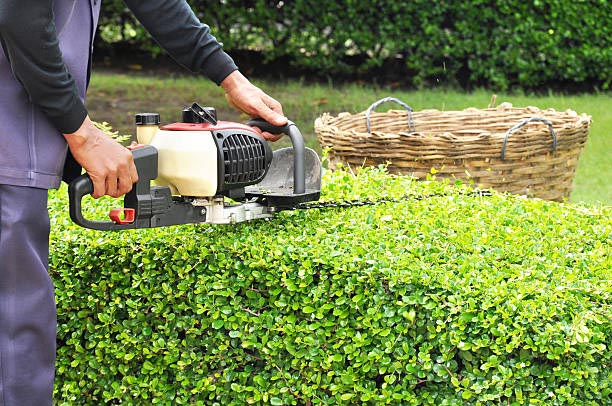Shrub Pruning Do's and Don'ts
Are you unsure how the shrubs in your compound will be shaped? Here are some pruning remedies for 5 prevalent issues.
Snip Shape
If the mere idea of cutting into a presumably happy plant makes you squirm, you’ll be glad to hear that you aren’t the only one. Still, homeowners who are aware of the advantages of pruning – larger flowers, more pleasing habit, better health – are usually mixed up when it comes to the right way and the right time to do the cutting, worrying that they’ll crop off next season’s flowers, stunt the growth o the plant, or kill it out-and-out. However, when you have an understanding of how plants react to pruning, you’ll come to see how many issues a proper cut can fix.
The first action to undertake to ensure effective pruning is correct timing. Shrubbery that blossoms on new wood, or branches that develop during the spring season and blossom during the summer – summer sweet and rose-of-Sharon are two – should be clipped in late February or at the beginning of March. This results in fewer but bigger flowers during the first year. Lee Reich, a horticulturist explained that trimming disseminates the accumulated energy amid fewer flower buds allowing the remaining ones to receive more sustenance.
Cutting back spring-flowering shrubs after they blossom allows them to grow new buds and branches for the remainder of the growing season since they blossom on old wood, or the previous season’s growth. Roger Cook, a This Old House landscape contractor said that if you miss out on the best time to trim, you can wait for the flowers of the shrub to brownout.
Effective pruning entails becoming skilled at two standard cuts. Continue reading to find out more on how to make use of them to solve common issues you might face.
Pro Advice
A TOH landscape contractor, Roger Cook said that that to take care of an unruly evergreen branch, you should clip it back to the epicenter of the shrub, where it intersects with another stem. If you crop off the wayward part, the stub that has been cut will be apparent and unappealing.
Problem: You’ll have a shrub that has been amateurishly cut.
Make choosy cuts to neaten a scantily trimmed shrub in order to promote new growth where you are targeting and get rid of less strong wood. Nicks tend to heal better when they’re made at the exact point and the right angle with a razor-sharp clean tool. Identify a branch with a bud pointing to the direction you want the new growth to go. Clip at a 45-degree angle just above that bud, with the lowermost end of the cut furthest away from the bud.
Don’t allow more than ¼ inch of the growth to be beyond the bud, since that can promote growth. Lopping too low can make the bud wither, and cropping at an angle over 45 degrees can form a bigger surface area which will heal very slowly, attracting disease.
Problem: Your shrub will have compact leaves at the top but the interior will look lifeless.
Use thinning cuts to open up the shrub. Just clipping branch tips, either with electric shears or manual pruners will result in compact leafage at the uppermost section of the shrub and a mesh of frail, leafless branches at the middle. Shearing removes entire branches right to the foundation or removes large branch sections to a focal stem, permitting air and light to get to the epicenter of the plant and promote overall growth throughout. Before you move to the much younger stems, cut the thickest and oldest wood first.
To ensure that your plant is attractive and strong, make sure that you do not lop off over a third of the shrub’s mass annually.
Problem: You’ll have a lopsided shrub.
To stimulate growth in the direction you want, use heading cuts. In contrast to thinning cuts which take away a branch, heading cuts curtail a branch down to a bud you’re pushing to branch out. Although it may appear counterproductive, you’ll have to crop off the shorter section of an uneven shrub to elicit growth and align it. Place the trimmer on the section of the stem you want to cut, just on top of the bud that will sprout in the direction you prefer.
You should note that in any one cut, you shouldn’t cut over a quarter of the overall length of the stem. For shrubs that are severely askew, utilize thinning cuts to cut older wood emerging from the longest part and heading cuts to trim the shorter section.
Problem: You’ll have an old plant that’s a woody, jumbled muddle.
Give the plant maintenance by cutting the old wood within the course of 3 years, which will provide enough space for new growth. Beginning from the shrub’s base, remove the branches located at the center, while at the same time removing at least a third of the total mass of the shrub. New growth arising from the base should start with the following growing season. Make sure to cut another third of the longstanding wood at the foundation after every two or three years.
After year three, the hedging plant should be composed of a completely new, strong growth.
Make sure not to cut over a third of the branches at any given time. This ensures that it conserves sufficient leafage, such that the plant can produce adequate (via photosynthesis) to remain healthy and produce new growth fast.
Problem: You’ve got a budding evergreen shrub whereby the lowermost part is leggy.
Use your thumb and index finger to pluck off the terminal ends of new branches on mountain laurel, Japanese pieris, azalea, rhododendron, and other broad-leafed evergreens to promote side branching on the shrub’s lower section. Just like a heading cut, lopping the end region of the leaf bud instigates the undeveloped bud under it to grow, which in turn stimulates blossoming side branching. Moreover, this is another method of controlling the overall size of the shrub.
Be careful not to luck the flower buds while pruning. These are the larger, juicier buds at the terminals of branches.

